Unveiling Lucknow's Majestic Heritage
Embark on a captivating free walking tour through Lucknow's rich history, exploring stunning monuments and uncovering tales of its royal past.
Time
3 Hours
Stops
9 Places
Distance
7.2 km
Bara Imambara
Start your tour at the Bara Imambara, a grand architectural marvel built by Nawab Asaf-ud-Daula in 1784, known for its central hall, which is one of the largest arched constructions without support beams.
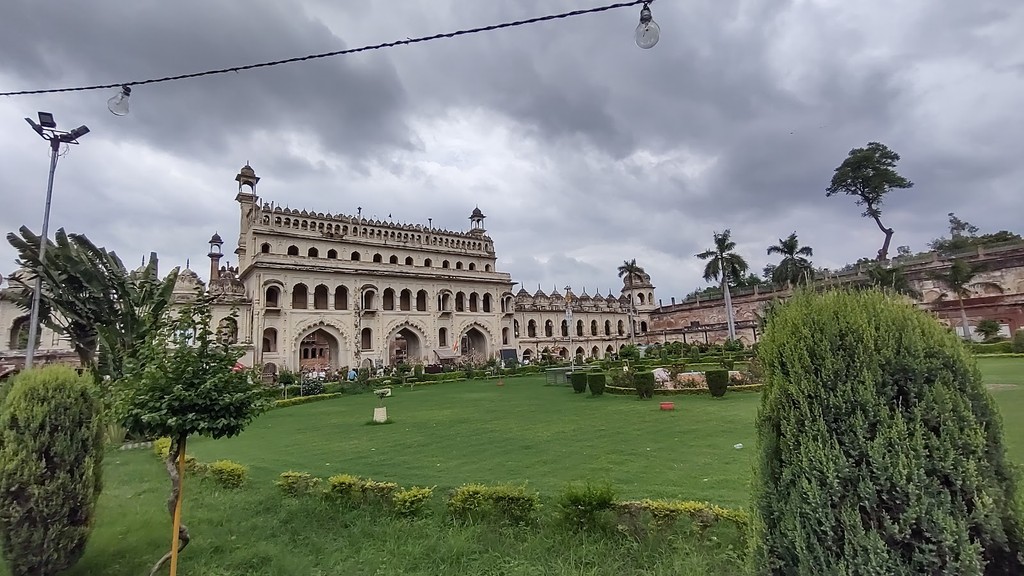
Bara Imambara (Source: Google Maps)
Bara Imambara, constructed in 1784 by Nawab Asaf-ud-Daula, is a remarkable architectural feat showcasing Indo-Islamic design. Its central hall is one of the largest arched constructions without support beams, exemplifying the ingenuity of Mughal architecture. This monument served not only as a mosque but also as a refuge for the famine-stricken populace of Lucknow during its construction, symbolizing the Nawab's commitment to his people. The complex also features a labyrinth, which adds an element of intrigue, and beautifully landscaped gardens that enhance its grandeur.
Rumi Darwaza
Just a brief stroll from the Chota Imambara, the Rumi Darwaza is a striking 18th-century gateway, often referred to as the Turkish Gate, showcasing the Awadhi architectural brilliance.
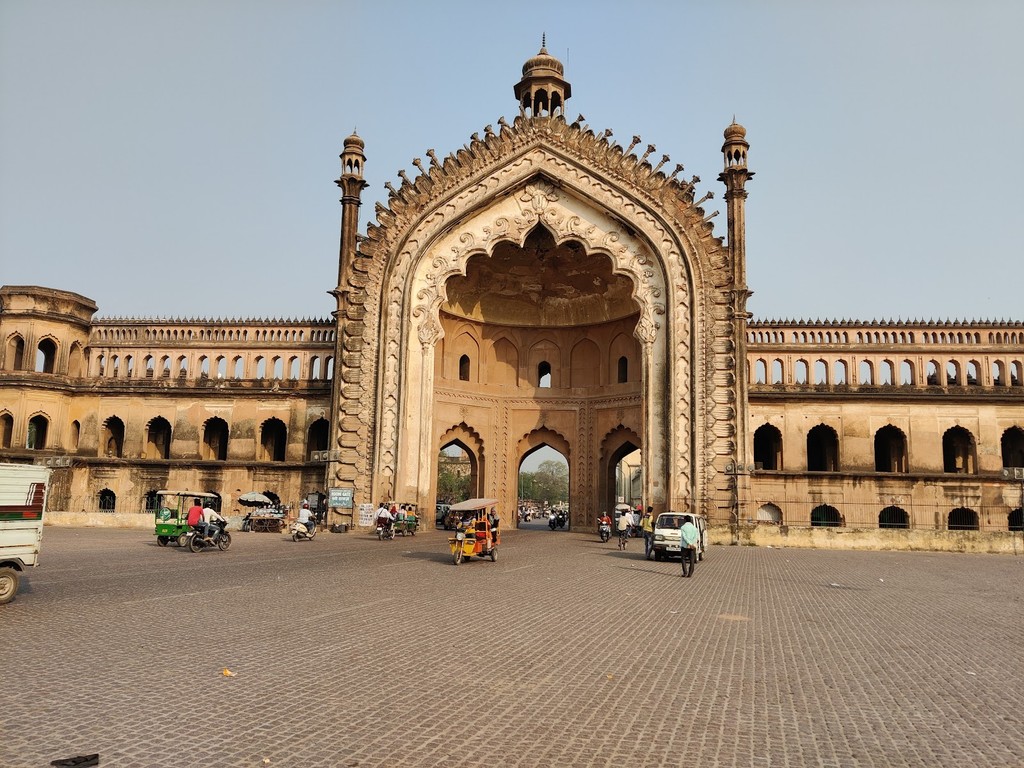
Rumi Darwaza (Source: Google Maps)
The Rumi Darwaza, often called the Turkish Gate, is a stunning gateway built in the 18th century, showcasing the architectural brilliance of the Awadhi style. Standing at 60 feet, this magnificent structure features intricate carvings and a central arch that leads into the heart of Lucknow. It was constructed by Nawab Asaf-ud-Daula to serve as a grand entrance to the city, reflecting the opulence of the era. The gate is not only an architectural marvel but also a cultural symbol, representing the fusion of Persian and Indian influences that characterize Lucknow's rich heritage.
Husainabad Clock Tower
Continuing your walk, you'll reach the Husainabad Clock Tower, standing tall at 221 feet, it is the tallest clock tower in India and a symbol of British architectural influence.
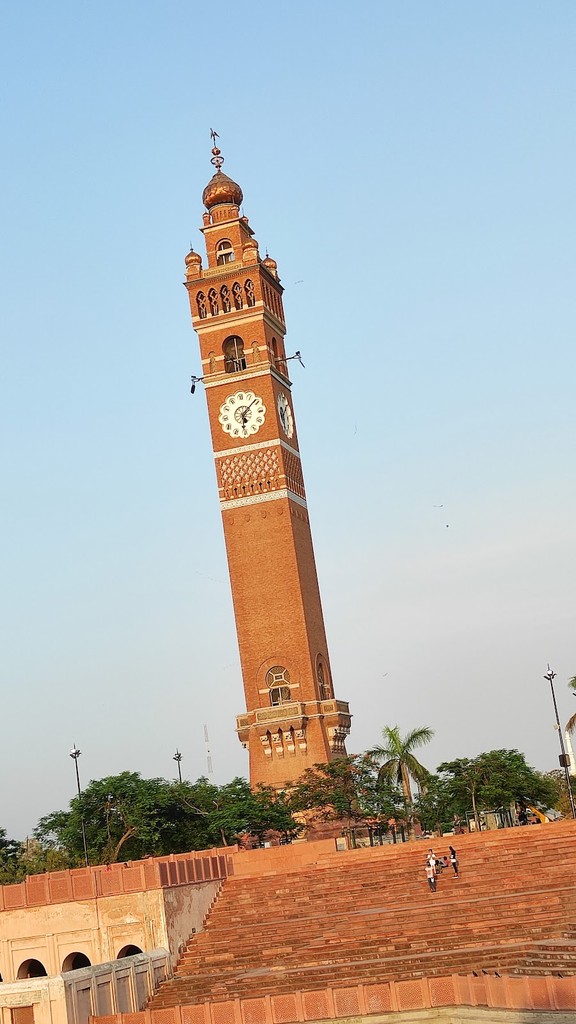
Husainabad Clock Tower (Source: Google Maps)
The Husainabad Clock Tower is the tallest clock tower in India, rising to a height of 221 feet. Built in 1881, it is an exquisite example of British Gothic architecture, featuring intricate detailing and a striking façade. The tower is part of the Husainabad Imambara complex and serves as a reminder of the colonial influence on Indian architecture. Its clock, which still functions today, is a prominent landmark in Lucknow, symbolizing the passage of time and the city's historical significance. The tower's design is complemented by beautifully landscaped gardens that surround it, adding to its allure.
Chota Imambara
A short walk from the Bara Imambara, the Chota Imambara is an exquisite monument adorned with chandeliers and intricate decorations, serving as a mausoleum for Muhammad Ali Shah and his mother.
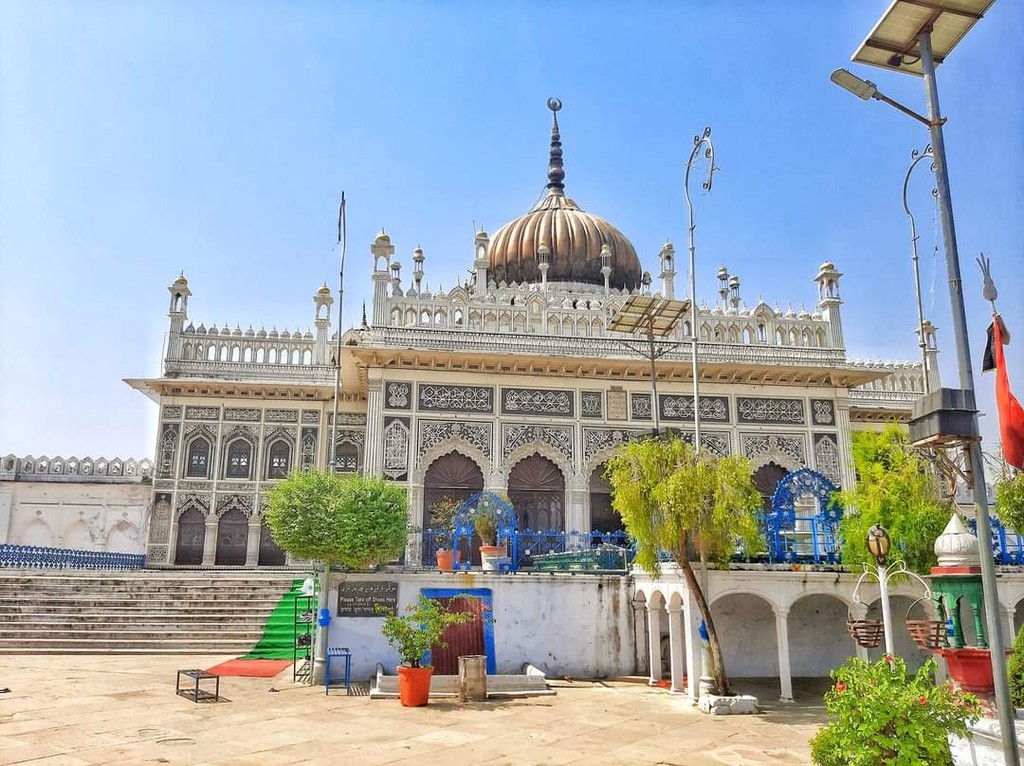
Chota Imambara (Source: Google Maps)
Chota Imambara, also known as the Imambara of Muhammad Ali Shah, is a splendid monument completed in 1838. It is renowned for its stunning chandeliers, intricate decorations, and tranquil ambiance, serving as a mausoleum for the Nawab and his mother. The elegant structure features a beautiful blend of Islamic and Indian architectural styles, with its domes and minarets reflecting the grandeur of the era. The interior is adorned with exquisite calligraphy and mirror work, creating a mesmerizing atmosphere. Chota Imambara is not only a site of worship but also a testament to the artistic legacy of the Nawabs of Awadh.
Satkhanda
A short walk away lies Satkhanda, an unfinished four-story watchtower built by Nawab Muhammad Ali Shah, intended to be a seven-story structure inspired by the Leaning Tower of Pisa.
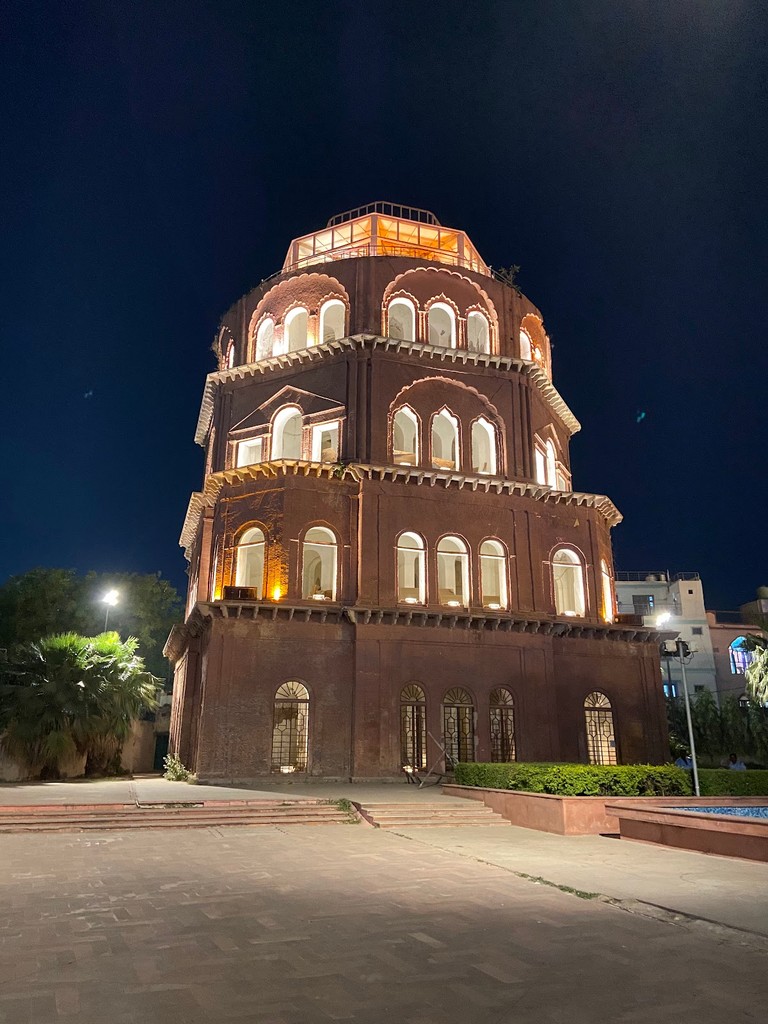
Satkhanda (Source: Google Maps)
Satkhanda is an unfinished four-story watchtower located in Lucknow, constructed by Nawab Muhammad Ali Shah. It was intended to be a seven-story structure, inspired by the famous Leaning Tower of Pisa. Built in the 19th century, the tower showcases a unique blend of architectural styles, with its elegant arches and intricate detailing. Although incomplete, Satkhanda stands as a testament to the Nawab's vision and ambition. The structure offers panoramic views of the surrounding area, making it a popular spot for visitors. Its historical significance and architectural beauty make it a noteworthy landmark in Lucknow.
Picture Gallery
Nearby, the Picture Gallery houses life-size portraits of the Nawabs of Awadh, offering a glimpse into the royal history and artistry of the region.
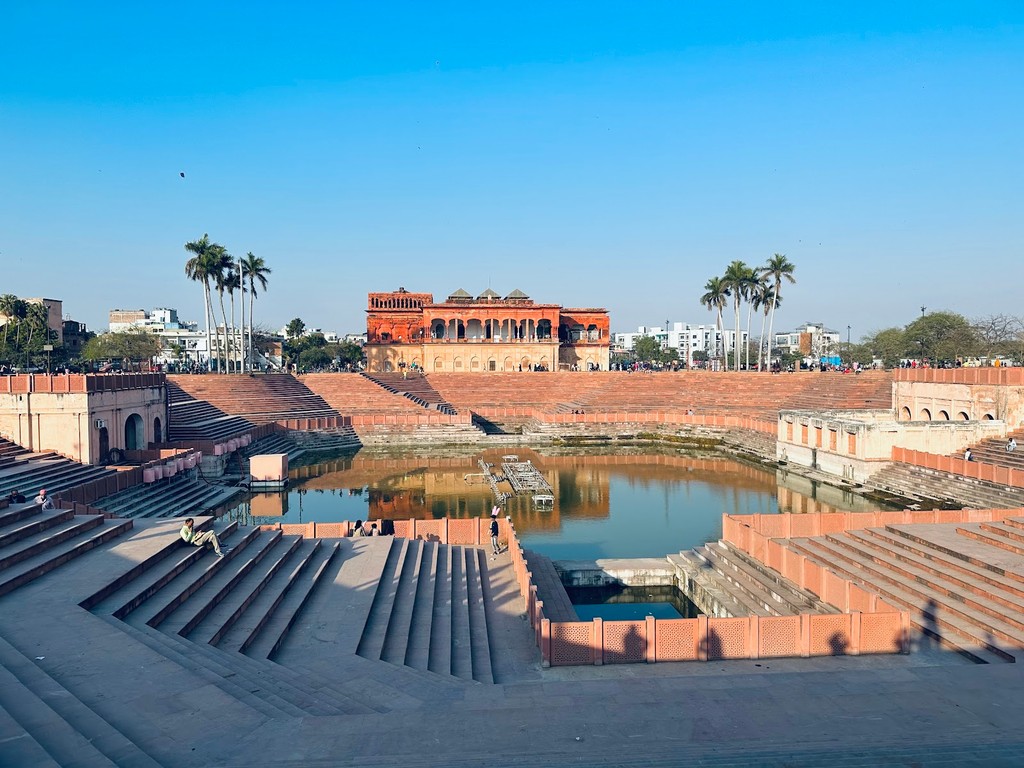
Picture Gallery (Source: Google Maps)
The Picture Gallery in Lucknow is a fascinating collection of life-size portraits of the Nawabs of Awadh, reflecting the region's royal history and artistic heritage. Housed within a beautifully designed structure, the gallery offers a glimpse into the opulent lifestyle of the Nawabs, showcasing their attire, regalia, and the grandeur of their courts. Each portrait tells a story of the Nawabs' contributions to art, culture, and governance, providing visitors with a deeper understanding of Lucknow's historical significance. The gallery is a must-visit for those interested in the rich tapestry of Awadhi history and artistry.
Teele Wali Masjid
As you proceed, visit Teele Wali Masjid, an elegant mosque with beautiful domes and minarets, offering a serene space for reflection and spiritual solace.
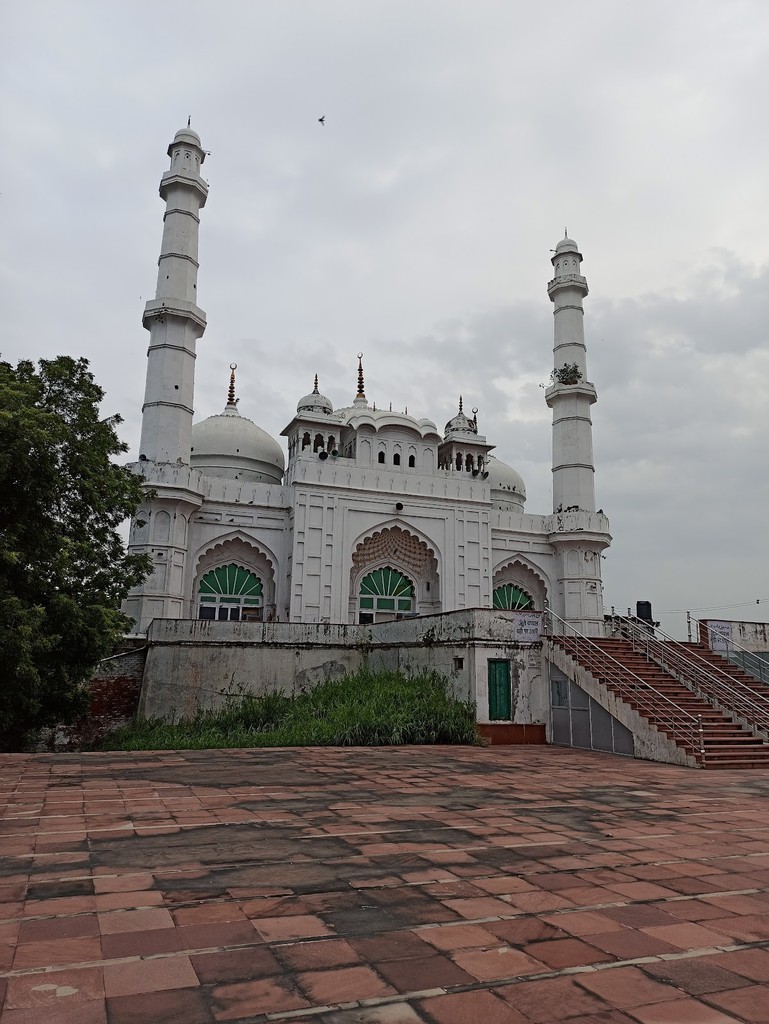
Teele Wali Masjid (Source: Google Maps)
Teele Wali Masjid is an elegant mosque known for its stunning architecture, featuring beautiful domes and minarets that rise gracefully against the skyline of Lucknow. Built in the 19th century, the mosque serves as a serene space for reflection and spiritual solace. Its intricate carvings and calligraphic inscriptions showcase the craftsmanship of the era. The masjid is not only a place of worship but also a cultural landmark, embodying the rich Islamic heritage of the region. Visitors often admire its tranquil atmosphere and architectural beauty, making it a peaceful retreat in the bustling city.
Residency
The British Residency is a significant historical site that played a crucial role during the 1857 First War of Independence, providing a poignant reminder of India's colonial past.
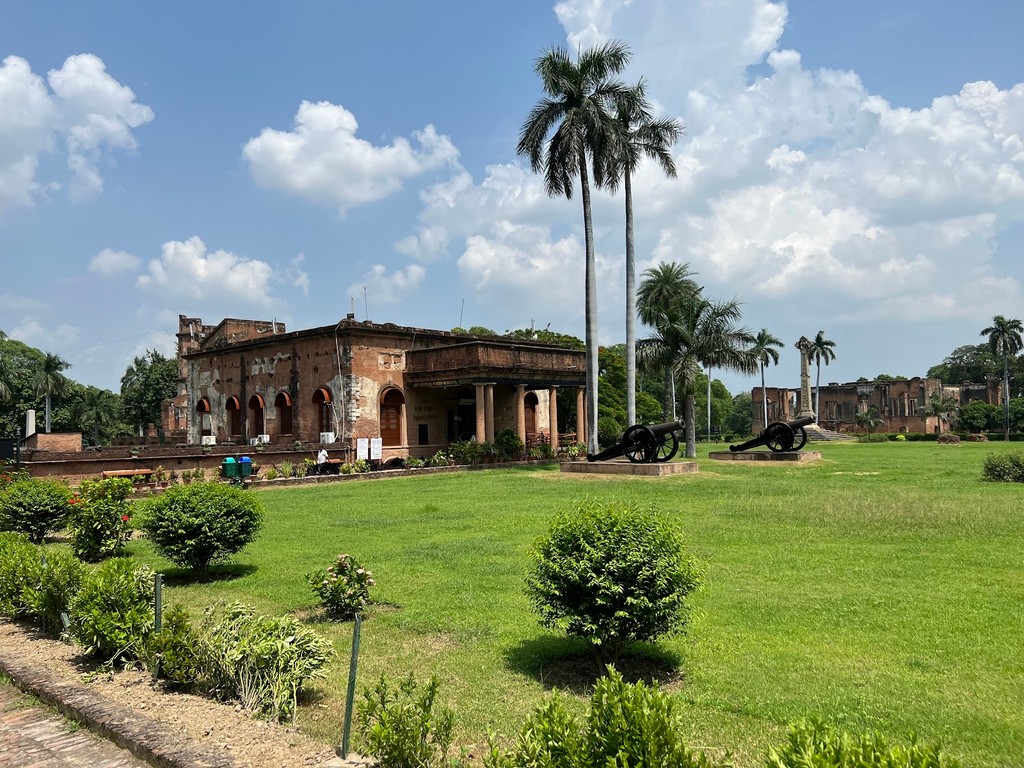
Residency (Source: Google Maps)
The British Residency is a historically significant site that played a crucial role during the 1857 First War of Independence. It served as the residence of British officials and became a focal point during the uprising, symbolizing India's colonial past. The complex features impressive ruins, including the remnants of the grand residence, gardens, and a museum that chronicles the events of the uprising. The architecture reflects a blend of British and Indian styles, highlighting the cultural exchange of the period. Today, the Residency stands as a poignant reminder of the struggle for independence and the resilience of the Indian spirit.
Moti Mahal
Conclude your tour at the Moti Mahal, a palace that served as the Nawabs' pleasure resort, offering splendid views of the Gomti River and showcasing the leisure lifestyle of the Nawabs.
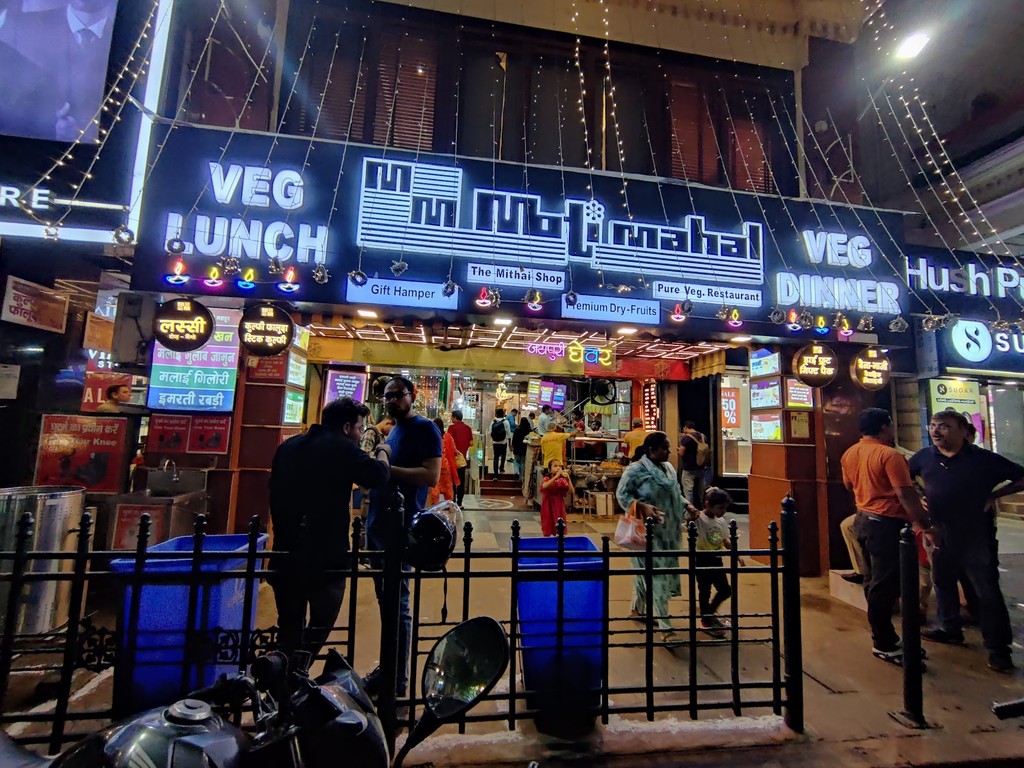
Moti Mahal (Source: Google Maps)
Moti Mahal, a magnificent palace located on the banks of the Gomti River, served as a pleasure resort for the Nawabs of Awadh. Built in the 18th century, it showcases the opulence and leisure lifestyle of the Nawabs, featuring splendid views of the river and surrounding landscape. The architecture is a beautiful blend of Indian and Mughal styles, with intricate carvings and elegant designs. Moti Mahal was a hub of cultural activities, hosting lavish gatherings and celebrations. Today, it stands as a testament to the grandeur of Awadhi heritage, inviting visitors to explore its rich history and enjoy the scenic beauty of the river.

Your travels, your rules.
Create your own Free Walking Tours.
Set your preferences, distances and anything you want to do or see.
Completely free, no payment required.